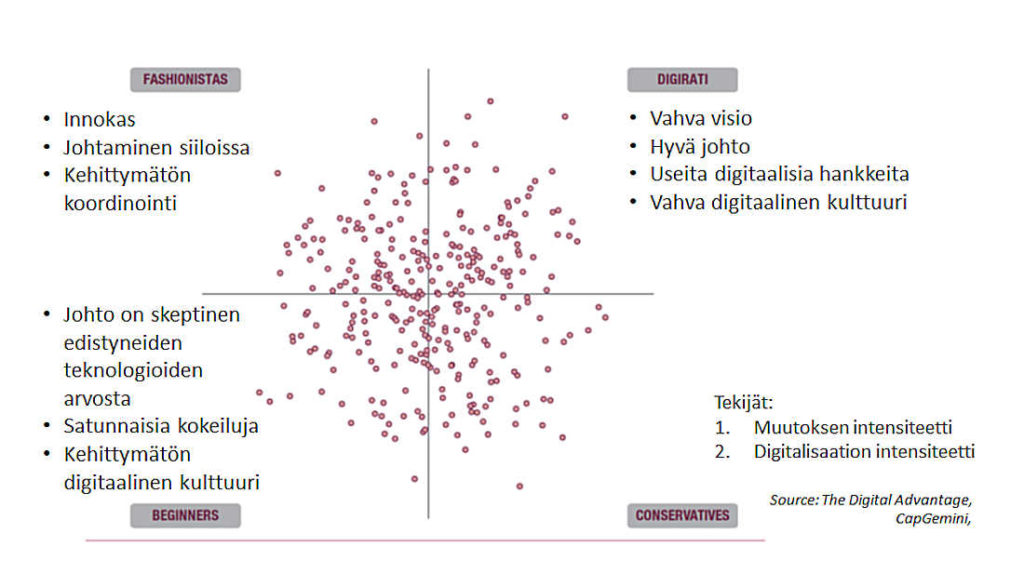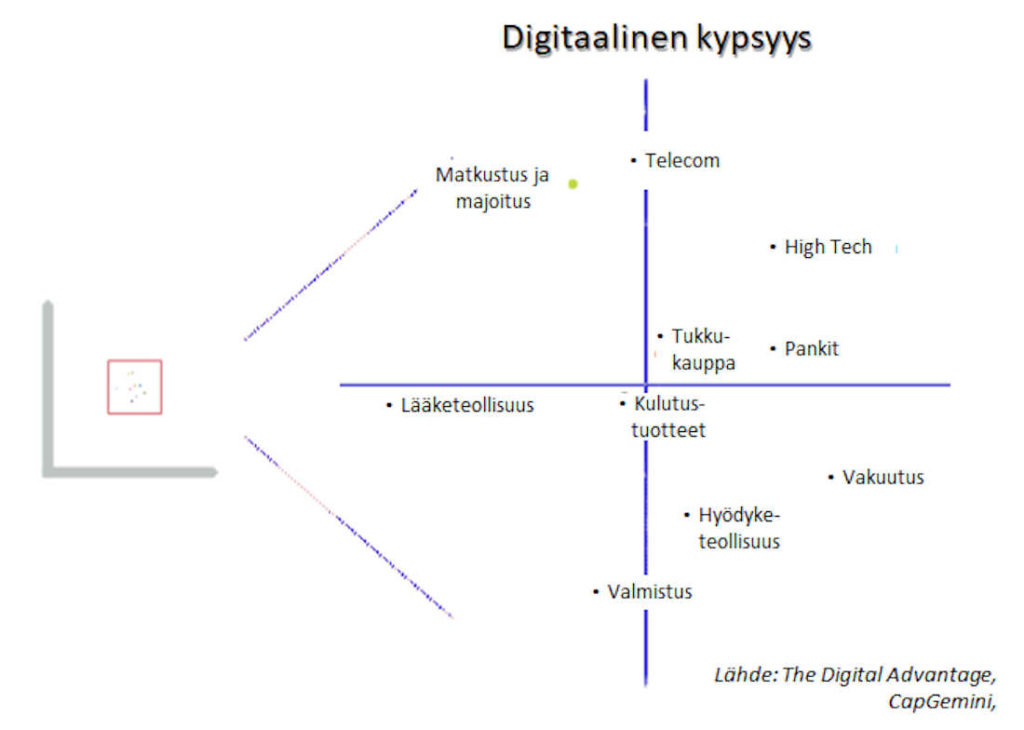Many companies not only implement the ERP system, but they see the ERP system as part of the digitalisation strategy, which is a holistic link between people, processes and technology. It is therefore necessary to understand the new nature and potential of digitalisation.
What is digital transformation?
Digital transformation is a process of creating new business models and creating the basis for the introduction of new technologies and data models. This is an ongoing process that challenges the management and employees of the company to identify old approaches and, on the other hand, to identify new opportunities at the level of data models and practices.
Digital is not primarily a technology, but a change in thought patterns and practices. The goal is to find organizational thinking mechanisms that enable and lead to the creation and deployment of new service models, data hierarchies, and applications.
What can a digital transformation achieve?
- Seamless customer experience across customer interface
- Enables continuous growth by applying mobile, eCommerce and digital sales channels
- Renew existing services and products with new features
- Develop strategic decision-making with deeper data analysis
- Creates and enables a new continuous improvement of culture (POOGI)
- Facilitate employee participation in the innovation process and in general to generate added value
- Automation enables workers to apply job targeting to actual value production.
The maturity of the digitalisation of companies can be outlined in the following field:

Steps to Digital transformation
- Understand strategic goals
The objectives need to be clarified especially from a customer perspective. Is it intended to create new business models or is it intended to improve the profitability of existing products?
Is it a small step in the process of development or radical change?
2. Analyze your organization's current culture and efficiency
What is the organizational attitude and readiness for continuous development? What is efficiency? Is there an instrument cluster for measuring efficiency?
What factors contradict the objectives of digitalisation and the current business culture?
3. Focus on developing human capacities and skills
Is organisational culture allowed open debate and encouragement for innovation and problem solving? Make a change management plan that comprehensively handles all change areas.
Strategic objectives should be set as the starting point for change management.
4. Put the focus on value production
Modelling of current processes and their pain points is a good starting point for the development of value production.
New value production processes can be modeled either (a) top-down value chain mapping (a) or (b) bottom-up value stream mapping. These can be used as a model for best practices in this field or can be introduced into a broader framework for development (e.g. Lean/Six Sigma).
5. Analyze existing data warehouses, their value and timability
Data quality is a critical component in the development of digitalisation. The existing data should be developed from two perspectives: (1) The accuracy of data, (2) data coverage.
These requirements require that existing information be cleaned and, on the other hand, enriched with new data elements.
6. Choose the new technology you need and also take it to the
To manage change, we need a technology road map. This is important in order to coordinate the steps that take place in stages in the desired direction. At the same time, a reference framework is created to assess the technical compatibility, cost-of-Cost-of-Ownership and deployment models.
A lot of work has already been done to develop digitalisation. The level of digital maturity can be outlined in different industries in the diagram below:


